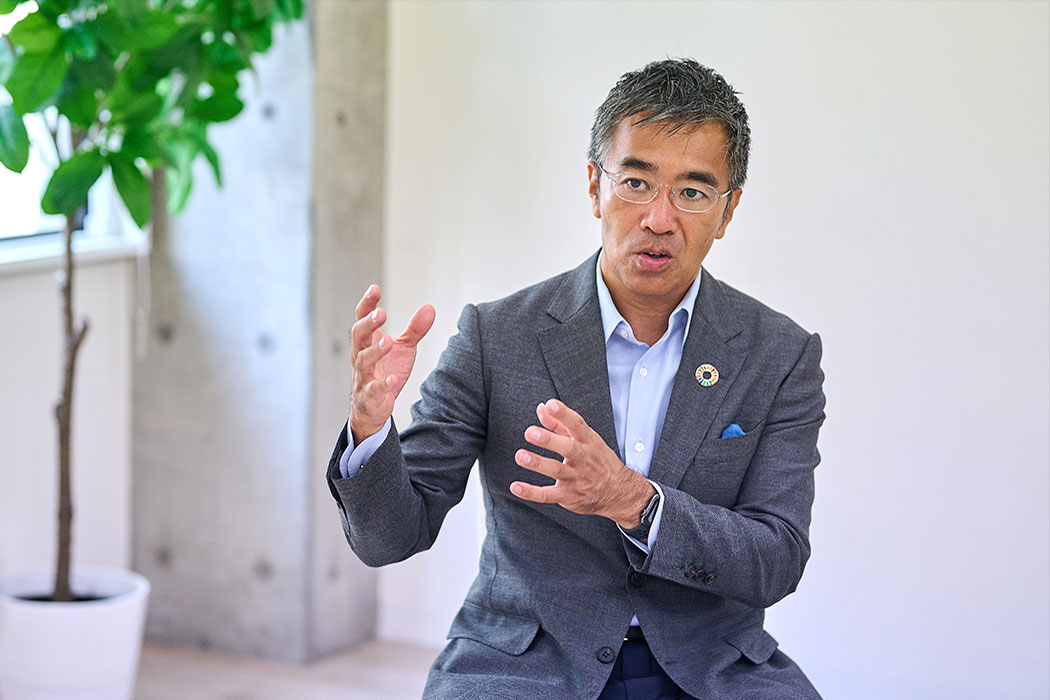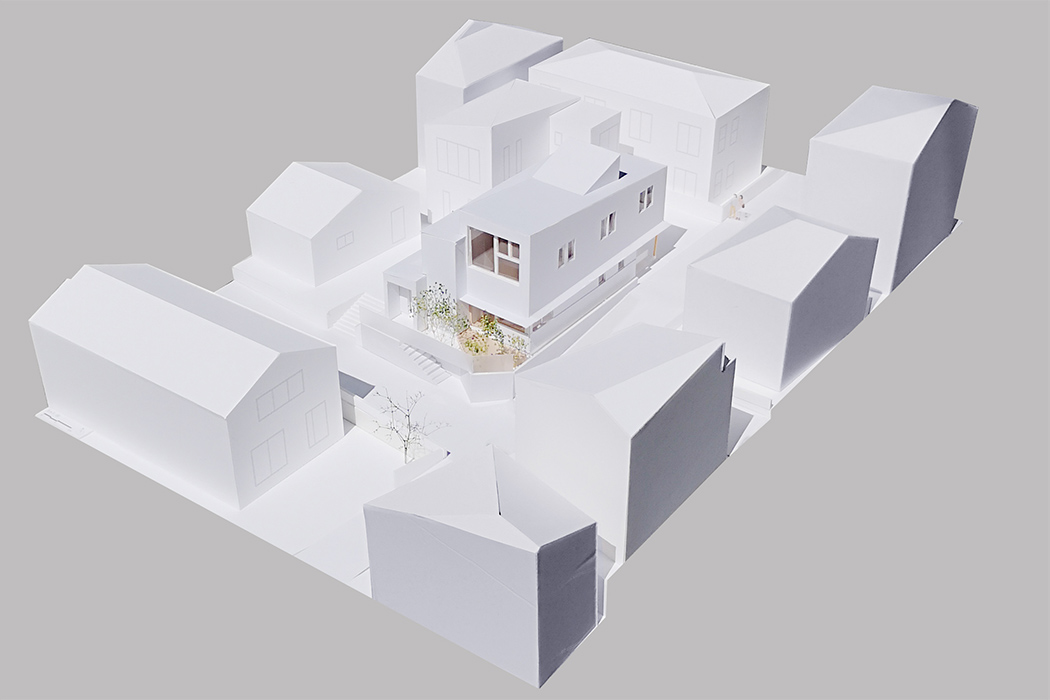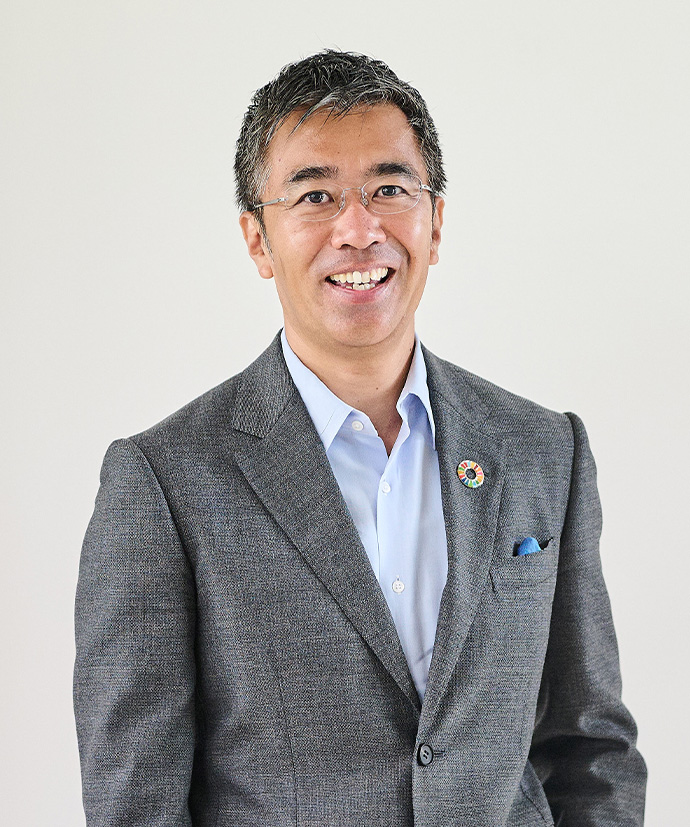
Expert Views

Norichika KanieEnjoy doing what you can for the future
First Published in Japanese in February 2023 [4 parts]
Part 4: Never underestimate the power of the individual

The COVID-19 pandemic revealed how unsustainable our world was. We need to learn from this and change our society for the sake of the future. In the final part of this interview, Professor Kanie suggests individual actions that we can all take. He also has a message for readers involved in the manufacturing industry.
── We have talked about what can be done towards achieving carbon neutrality and SDGs from various angles. Shifting to an individual point of view, do you have any specific advice about what each of us can do?
Looking at the SDGs, I often think what a useful tool they make. There are 17 goals, so there is sure to be at least one that you are interested in. If you are thinking: “I feel a sense of crisis about the environment, but I don’t know what to do about it,” then why not use the SDGs as a starting point? If you are interested in the issue of energy, small actions like switching off lights, and using LED lighting will not only help to achieve the goal of the SDGs, but will help save on energy bills too. If you love the sea, using a reusable bottle instead of buying drinks in disposable plastic bottles is a good way of helping to combat plastic pollution in the oceans. Even if you only do this on alternate days, you will halve the number of bottles you throw away, so someone who previously bought a drink every day could make a reduction of over a hundred bottles a year. Do something easily achievable, something that you enjoy doing, and keep doing it. Small changes to your habits make for a future-friendly lifestyle.
── So people should not think: “I can’t change the world by myself”?
That’s right. Always think of yourself as being in the leading role. These days, we can all share our ideas and actions with the wider world through social media and videos. Never underestimate the power of the individual. You never know, your actions could catch the attention of an influencer and go viral! Incidentally, I am quite particular about clothing. One day I realized that clothes are not sustainable: they are mass produced and then thrown away. Since then, I get most of my clothes made to order. I specify long-lasting, sustainable fabrics, and choose natural shell or recycled plastic for the buttons and so on. Because my clothes are made to fit me, it minimizes waste, and above all, I treasure each garment for longer. At the same time as being good for sustainability, tailored clothing is a small pleasure for me. Even if something takes very little effort, if you don’t enjoy it, then it won’t last.
── Speaking of your own sustainability efforts, the “SDG House” that you had built for yourself has been featured in the media and the project will soon be published as a book.
When I was thinking of moving to a new apartment, I was walking with a friend of mine who is an architect and asked him if he knew any good developers. He slapped me on the shoulder and said, “You’re involved in the SDGs – you should put them into practice in your own home!” I am always saying that the good thing about the SDGs is that they bring global issues and goals closer to home, but I had never thought of applying them to my own house. I decided “OK, let’s try it!” so I incorporated as much as I could: insulation, solar panels, and so on. I even traveled to the forest in Owase (Mie prefecture, Japan) where the timber for the structure was sourced, which made me realize that we must not waste trees that have taken decades to grow. I learned a lot from this construction project, and it’s not over now that the house is finished. I am considering installing an energy storage system next, and I keep coming up with new ideas! (Laughs)

Concept drawing of the “SDG House” at the design stage. The architectural design took the economical, social and environmental aspects of the SDGs into consideration.
(Image credit: Nori Architects)
── The story behind the “SDG House” shows how human interaction can lead to discovery and development. Finally, do you have a message of encouragement for our readers who are working hard in the manufacturing world?
── When we hear or read the words carbon neutral or SDGs, we tend to think of these as issues for the government or for big corporations. Perhaps this interview has made people realize that environmental issues are everyone’s concern. For anyone who is still thinking “I don’t know what I should do for the planet,” here’s a tip from Professor Kanie: “Value time spent doing nothing.” Picture the answer in your head, relax and empty your mind. This will remove distractions and the answer you’ve been looking for will come to you. It’s certainly true that we come up with better ideas when we are relaxed than when sitting at a desk agonizing over a problem. Being good at relaxing could be the secret to enjoying a sustainable life.
* This article is based on an interview conducted in September 2022.
